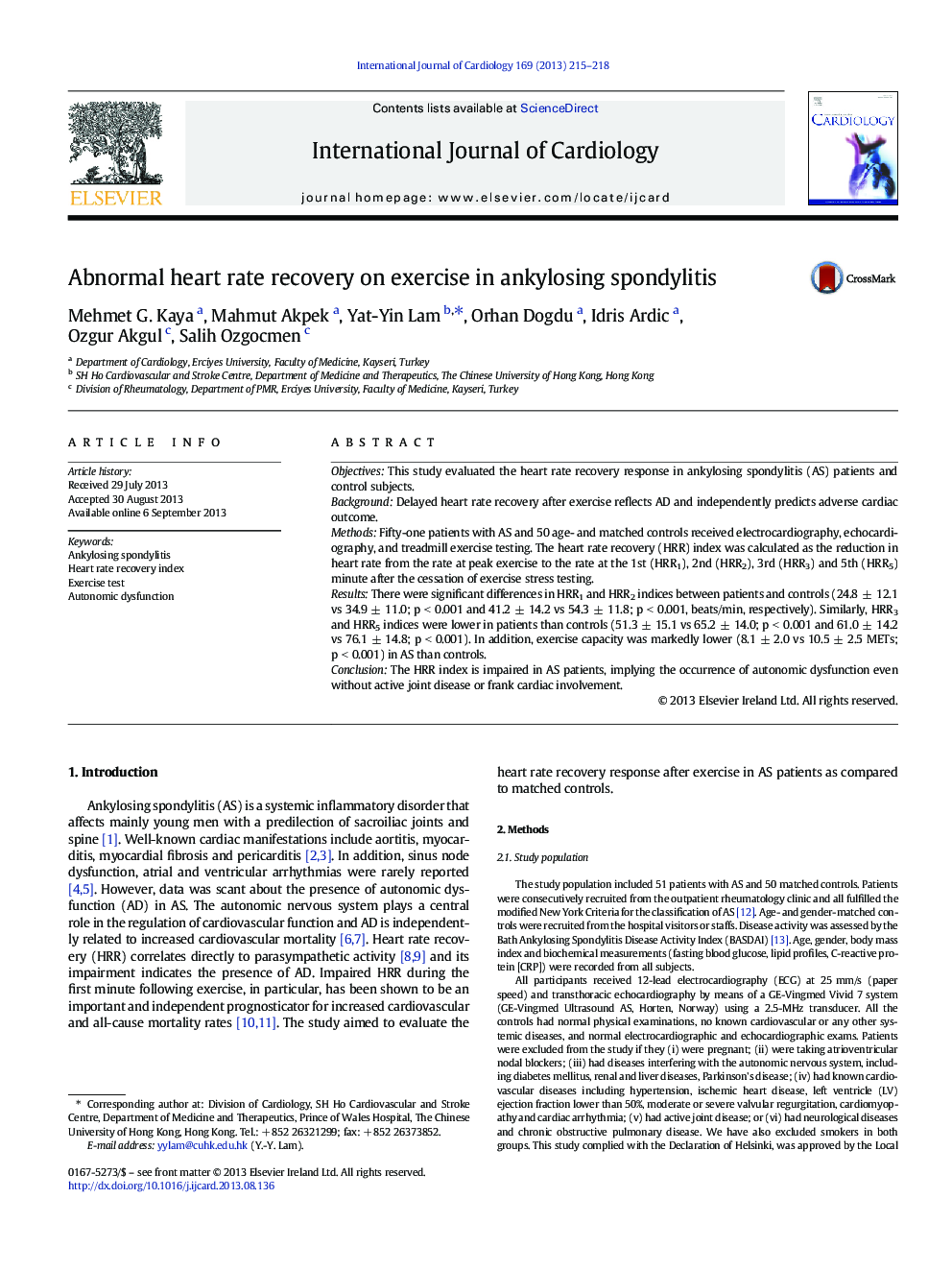| Article ID | Journal | Published Year | Pages | File Type |
|---|---|---|---|---|
| 5974292 | International Journal of Cardiology | 2013 | 4 Pages |
ObjectivesThis study evaluated the heart rate recovery response in ankylosing spondylitis (AS) patients and control subjects.BackgroundDelayed heart rate recovery after exercise reflects AD and independently predicts adverse cardiac outcome.MethodsFifty-one patients with AS and 50 age- and matched controls received electrocardiography, echocardiography, and treadmill exercise testing. The heart rate recovery (HRR) index was calculated as the reduction in heart rate from the rate at peak exercise to the rate at the 1st (HRR1), 2nd (HRR2), 3rd (HRR3) and 5th (HRR5) minute after the cessation of exercise stress testing.ResultsThere were significant differences in HRR1 and HRR2 indices between patients and controls (24.8 ± 12.1 vs 34.9 ± 11.0; p < 0.001 and 41.2 ± 14.2 vs 54.3 ± 11.8; p < 0.001, beats/min, respectively). Similarly, HRR3 and HRR5 indices were lower in patients than controls (51.3 ± 15.1 vs 65.2 ± 14.0; p < 0.001 and 61.0 ± 14.2 vs 76.1 ± 14.8; p < 0.001). In addition, exercise capacity was markedly lower (8.1 ± 2.0 vs 10.5 ± 2.5 METs; p < 0.001) in AS than controls.ConclusionThe HRR index is impaired in AS patients, implying the occurrence of autonomic dysfunction even without active joint disease or frank cardiac involvement.
